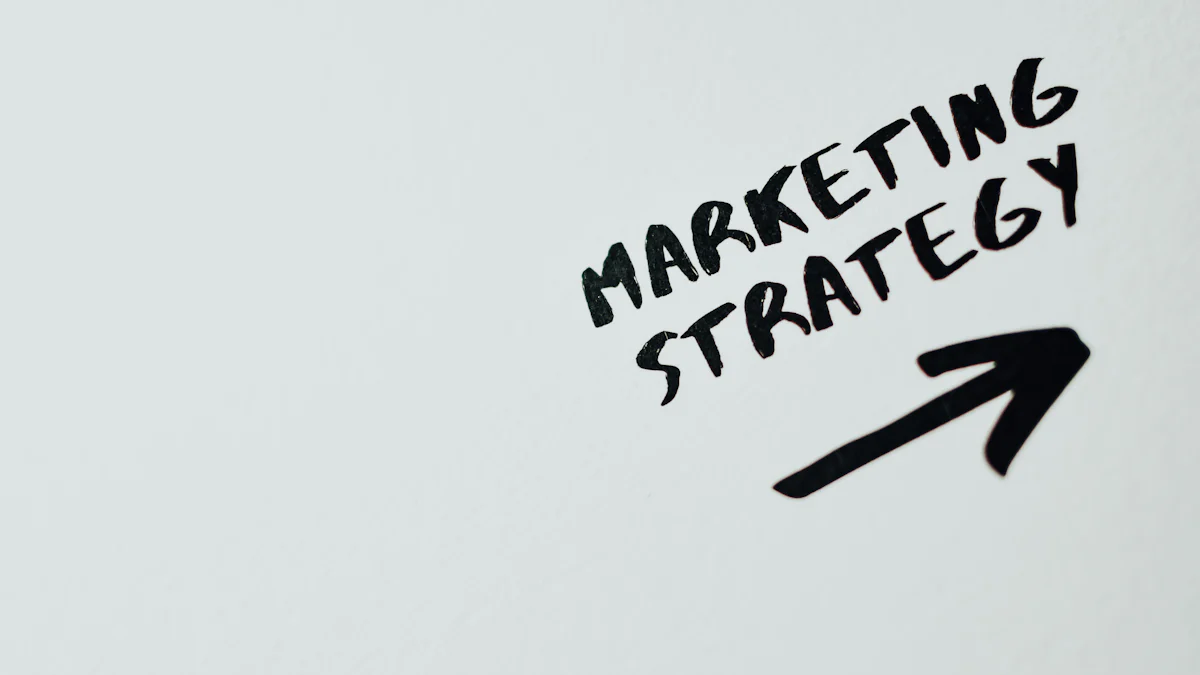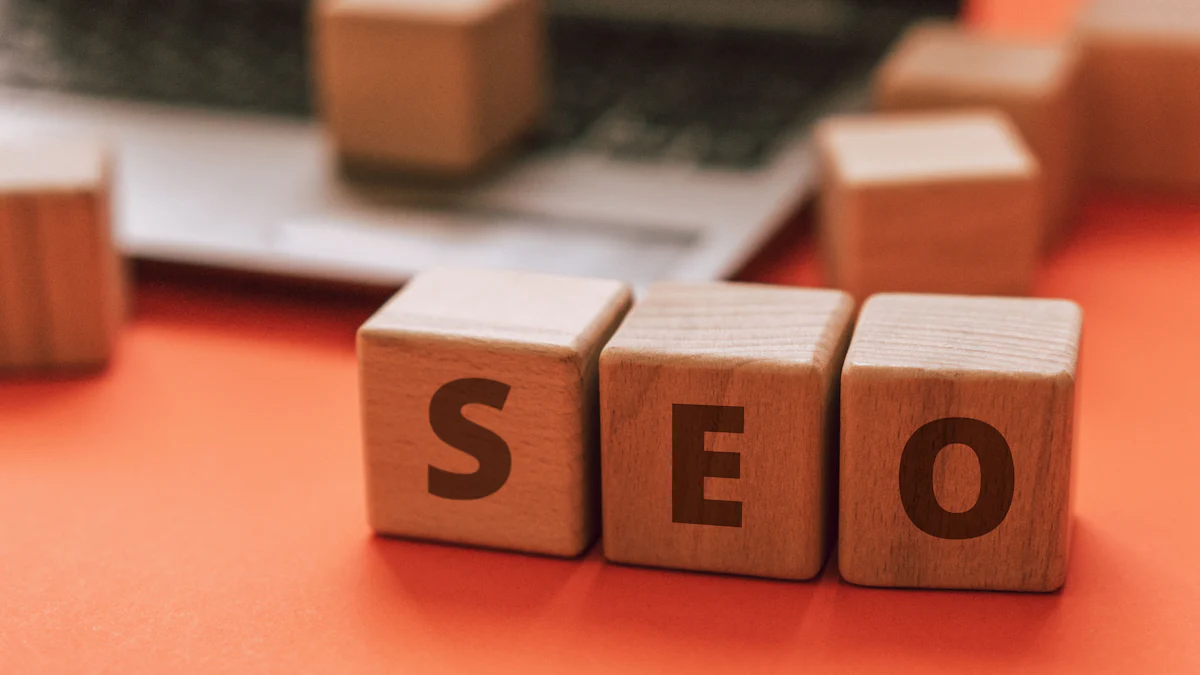Understanding the Key Differences Between Organic and Paid Marketing

Marketing strategies play a crucial role in shaping the success of any business. Understanding different approaches helps you make informed decisions. With over 91% of businesses using social media for marketing, it's clear that choosing the right strategy is vital. You might wonder about the differences between organic marketing vs paid marketing. Organic methods often bring the best ROI, with 49% of businesses favoring them. Meanwhile, paid strategies offer immediate results. Knowing these distinctions empowers you to tailor your marketing efforts effectively.
Definitions and Overview
Understanding the key differences between organic marketing and paid marketing is essential for crafting an effective strategy. Each approach has unique characteristics and benefits, which can significantly impact your business's success.
Organic Marketing
Definition and Explanation
Organic marketing, often referred to as inbound marketing, involves attracting customers naturally over time without paying for ads. This strategy focuses on optimizing your website and creating high-quality content to build brand awareness and drive traffic. You engage potential customers through valuable content that addresses their needs and interests. Si Quan Ong, a content marketing expert, explains that organic marketing aims to attract traffic for free, emphasizing relationship-building with your audience.
Key Characteristics
Organic marketing relies on several key characteristics:
Long-term Strategy: It builds strong relationships with current and potential customers through consistent, relevant content.
Non-Intrusive: This approach feels more authentic and less intrusive, as it leverages your brand's presence naturally.
Cost-Effective: While it requires time and effort, organic marketing doesn't involve direct advertising costs.
Relationship Building: By providing valuable content, you foster trust and credibility with your audience.
Paid Marketing
Definition and Explanation
Paid marketing, on the other hand, involves spending money to achieve visibility and reach your target audience quickly. This strategy includes various forms of advertising, such as pay-per-click (PPC) ads, social media ads, and sponsored content. Paid marketing aims to convert an audience from a lead into a sale, offering immediate results and measurable outcomes.
Key Characteristics
Paid marketing is characterized by:
Immediate Results: You can see quick outcomes from your campaigns, making it ideal for time-sensitive promotions.
Targeted Reach: Paid ads allow precise targeting based on user intent, ensuring your message reaches the right audience.
Budget Flexibility: You can adjust your spending based on campaign performance and business goals.
Measurable ROI: With clear metrics, you can track the effectiveness of your campaigns and optimize them for better results.
Elements of Organic Marketing
Organic marketing plays a pivotal role in building a brand's presence without direct advertising costs. It focuses on creating valuable content that naturally attracts and engages your audience. Let's explore the key elements of organic marketing.
Content Marketing
Content marketing serves as the backbone of organic marketing. It involves creating and sharing valuable content to attract and retain a clearly defined audience. This approach helps you establish authority and foster trust with your audience.
Blogs and Articles
Blogs and articles are essential components of content marketing. They allow you to share insights, educate your audience, and address their needs. By consistently publishing high-quality content, you can improve your website's visibility and drive organic traffic. For instance, CulturalThreads Global Marketing Strategy amplified its presence by partnering with cultural festivals and Japanese art exhibitions worldwide. This strategy demonstrates the efficacy of organic marketing through cultural partnerships.
Social Media Engagement
Social media platforms offer a powerful avenue for organic marketing. Engaging with your audience through posts, comments, and shares helps build a community around your brand. You can leverage influencer support to boost your campaigns. For example, social media posts from influencers can significantly impact your marketing efforts, as seen in a startup's Earth Day campaign. By creating engaging organic posts, you can enhance your brand's visibility and foster meaningful connections with your audience.
SEO (Search Engine Optimization)
SEO is another critical element of organic marketing. It involves optimizing your website to rank higher in search engine results, thereby increasing visibility and attracting more visitors.
Keywords and Content Optimization
Keywords play a crucial role in SEO. By identifying and incorporating relevant keywords into your content, you can improve your website's search engine ranking. Content optimization ensures that your material is both informative and engaging, meeting the needs of your audience while adhering to search engine guidelines. Experimentation in organic marketing, such as testing different approaches and tactics, can help you achieve the best results.
Link Building
Link building is an essential aspect of SEO. It involves acquiring hyperlinks from other websites to your own, which can enhance your site's authority and improve its search engine ranking. By focusing on quality over quantity, you can build a robust link profile that supports your organic marketing efforts. Brand storytelling with brand ambassadors, for instance, can weave unique narratives that encourage other sites to link back to your content.
Elements of Paid Marketing
Paid marketing offers a direct path to reach your audience quickly and effectively. By investing in advertising, you can ensure your message gets in front of the right people at the right time. Let's delve into the essential elements of paid marketing.
Types of Paid Advertising
Paid advertising comes in various forms, each with its unique advantages. Understanding these types helps you choose the best fit for your business goals.
Pay-Per-Click (PPC)
Pay-Per-Click (PPC) advertising allows you to pay only when someone clicks on your ad. This model provides a cost-effective way to drive traffic to your website. You can set a budget that aligns with your financial capabilities, ensuring you control your spending. PPC ads appear on search engines and other platforms, offering immediate visibility. For instance, Facebook ads have an average cost per click of $0.44, making them an affordable option for many businesses.
Social Media Ads
Social media platforms offer powerful advertising opportunities. You can target specific demographics, interests, and behaviors, ensuring your ads reach the most relevant audience. Instagram ads, for example, have a cost per click ranging from $0.20 to $2.00, while LinkedIn ads vary based on the campaign type. These platforms allow you to engage users with creative content, enhancing your brand's presence. Social media ads also provide detailed analytics, helping you measure the success of your campaigns.
Budget and Cost Considerations
Setting a budget and understanding cost implications are crucial for successful paid marketing. These considerations help you maximize your return on investment (ROI) and achieve your marketing objectives.
Setting a Budget
Establishing a budget is the first step in any paid marketing strategy. You need to determine how much you're willing to spend and allocate funds accordingly. Consider factors like campaign goals, target audience, and expected outcomes. A well-planned budget ensures you don't overspend while achieving your desired results. For example, Facebook ads offer flexibility, allowing you to adjust your spending based on performance.
Measuring ROI
Measuring ROI is vital to assess the effectiveness of your paid marketing efforts. You can track metrics such as click-through rates, conversions, and sales to evaluate your campaigns. This data helps you identify what's working and what needs improvement. By analyzing ROI, you can optimize your strategies for better outcomes. Paid marketing provides clear metrics, making it easier to measure success compared to organic marketing.
Key Differences Between Organic and Paid Marketing
Understanding the key differences between organic marketing vs paid marketing can help you make informed decisions about your strategy. Each approach has its own cost implications and audience reach capabilities.
Cost Implications
Short-term vs Long-term Investment
When you consider organic marketing vs paid marketing, cost is a major factor. Organic marketing often requires an initial investment of time and resources. You focus on creating valuable content and building relationships. This approach may take longer to show results, but it can pay off significantly in the long run. Organic marketing builds a strong foundation for your brand, offering sustainable growth over time.
In contrast, paid marketing involves direct financial investment. You pay for ads to gain immediate visibility and reach. This method delivers faster results, making it ideal for short-term goals. However, once you stop funding these campaigns, the visibility often diminishes. Therefore, while paid marketing offers quick returns, it requires ongoing investment to maintain momentum.
Budget Flexibility
Budget flexibility is another crucial aspect when comparing organic marketing vs paid marketing. Organic marketing generally involves lower costs, as it doesn't require direct spending on ads. You can adjust your efforts based on available resources, making it a cost-effective option for many businesses.
Paid marketing, on the other hand, offers more control over your budget. You can set specific spending limits for each campaign, allowing you to manage costs effectively. This flexibility enables you to scale your efforts up or down based on performance and business needs. However, it's important to monitor your spending closely to ensure you achieve a positive return on investment.
Reach and Audience Targeting
Organic Reach Limitations
Organic marketing relies on content promotion and social media engagement to reach your audience. While this approach can be highly effective, it often comes with limitations. Organic reach depends on factors like search engine algorithms and social media platform changes. As a result, reaching a large audience may take time and consistent effort.
Despite these challenges, organic marketing can help you build a loyal audience over time. By providing valuable content, you foster trust and credibility with your audience. This long-term relationship-building can lead to increased brand loyalty and customer retention.
Precision Targeting in Paid Ads
Paid marketing excels in precision targeting. You can tailor your ads to reach specific demographics, interests, and behaviors. This level of targeting ensures your message reaches the right audience at the right time. Paid ads can boost exposure more effectively than organic methods, especially for time-sensitive promotions.
With paid marketing, you have access to detailed analytics that help you measure the success of your campaigns. These insights allow you to refine your strategies and optimize your efforts for better results. While organic marketing vs paid marketing each have their strengths, integrating both approaches can maximize your reach and impact.
Channels Used in Each Marketing Type

Understanding the channels used in organic marketing vs paid marketing can help you choose the right strategy for your business. Each type of marketing utilizes different platforms to reach and engage audiences effectively.
Organic Marketing Channels
Organic marketing relies on platforms that allow you to build relationships and engage with your audience without direct advertising costs. Here are some key channels:
Social Media Platforms
Social media platforms like Facebook, Instagram, and Twitter serve as powerful tools for organic marketing. You can share valuable content, engage with followers, and build a community around your brand. These platforms enable you to connect with your audience on a personal level, fostering trust and loyalty. By consistently posting relevant content and interacting with users, you can increase your brand's visibility and reach. According to the Ultimate Organic Marketing Guide, leveraging social media algorithms and best practices is essential for maximizing organic reach.
Content Distribution Networks
Content distribution networks (CDNs) play a crucial role in organic marketing. They help you distribute your content across various platforms, increasing its visibility and reach. By using CDNs, you can ensure that your content reaches a wider audience, enhancing your brand's presence. Email marketing, for instance, provides a high return on investment (ROI) in organic marketing. It allows you to stay in touch with customers and promote your content effectively. As noted in the Rock Content journal, word-of-mouth messaging also benefits organic marketing, helping you build credibility and trust.
Paid Marketing Channels
Paid marketing channels offer a direct path to reach your target audience quickly and efficiently. These channels require financial investment but provide immediate results and measurable outcomes.
Search Engines
Search engines like Google and Bing offer paid advertising opportunities through pay-per-click (PPC) campaigns. These ads appear at the top of search results, ensuring maximum visibility. By targeting specific keywords, you can reach users actively searching for products or services like yours. This precision targeting makes search engine advertising highly effective for driving traffic and conversions. The Inbeat Agency highlights that paid campaigns have a broad and fast reach within the target market, making them ideal for time-sensitive promotions.
Social Media Advertising Platforms
Social media advertising platforms, such as Facebook Ads and Instagram Ads, allow you to target specific demographics, interests, and behaviors. These platforms provide detailed analytics, helping you measure the success of your campaigns and optimize your strategies. By investing in social media ads, you can boost your brand's exposure and reach a wider audience. According to WordStream, digital ads can increase brand awareness by up to 80%, highlighting the effectiveness of paid marketing in reaching new customers.
Which Marketing Strategy is Better?
Choosing between organic marketing vs paid marketing depends on various factors. Each strategy offers unique benefits and challenges. Understanding these can help you decide which approach aligns best with your business needs.
Factors to Consider
Business Goals
Your business goals play a crucial role in determining the right marketing strategy. If you aim for long-term growth and brand credibility, organic marketing might be more suitable. It focuses on building relationships and trust with your audience over time. This approach can lead to sustainable growth and customer loyalty.
On the other hand, if your goal is to achieve quick results and boost sales rapidly, paid marketing could be the better choice. It provides immediate visibility and allows you to target specific audiences effectively. Paid marketing can help you reach your short-term objectives swiftly.
Industry and Competition
The industry you operate in and the level of competition also influence your marketing strategy choice. In highly competitive industries, paid marketing can give you an edge by ensuring your brand stands out. It allows you to reach potential customers before your competitors do.
However, in less competitive markets, organic marketing can be highly effective. You can establish your brand as an authority by consistently providing valuable content. This approach can help you build a loyal customer base without the need for significant financial investment.
Pros and Cons of Each Strategy
Organic Marketing Pros and Cons
Pros:
Cost-Effective: Organic marketing requires minimal financial investment. You focus on creating valuable content that attracts and engages your audience naturally.
Long-Term Benefits: This strategy builds lasting relationships with your audience. It enhances brand credibility and fosters customer loyalty over time.
Authenticity: Organic marketing feels more genuine. It relies on providing value rather than pushing sales.
Cons:
Time-Consuming: Organic marketing takes time to show results. You need patience and consistent effort to see significant outcomes.
Limited Reach: Reaching a large audience can be challenging. Organic methods depend on factors like search engine algorithms and social media changes.
Paid Marketing Pros and Cons
Pros:
Immediate Results: Paid marketing delivers quick outcomes. You can achieve your goals rapidly, making it ideal for time-sensitive campaigns.
Precise Targeting: You can tailor your ads to reach specific demographics and interests. This ensures your message reaches the right audience.
Measurable Outcomes: Paid marketing provides clear metrics. You can track the success of your campaigns and optimize them for better results.
Cons:
Costly: Paid marketing requires financial investment. You need to allocate a budget for ads, which can be expensive.
Temporary Impact: Once you stop funding your campaigns, visibility often diminishes. Paid marketing requires ongoing investment to maintain momentum.
In conclusion, the choice between organic marketing vs paid marketing depends on your specific business needs and goals. By considering factors like business objectives and industry competition, you can make an informed decision. Both strategies have their strengths and weaknesses. Integrating them can maximize your reach and impact, ensuring a well-rounded marketing approach.
In summary, understanding the key differences between organic and paid marketing can significantly impact your business strategy. Organic marketing builds long-term relationships and credibility, while paid marketing offers immediate visibility and precise targeting.
"The other day I looked in my wallet and I didn’t have any cash at all, and that was normal." This anecdote highlights how rapidly our world changes, much like the evolving landscape of marketing strategies.
When choosing the right approach, consider your business goals and industry dynamics. Assess your unique needs to determine whether organic, paid, or a combination of both strategies best suits your objectives.
See Also
Revealing the Future: B2B Content Marketing Trends for 2024
Recognizing the Significance of Blog On-Page SEO: An In-Depth Look
Five Steps to Recruiting Your Perfect Content Marketing Advisor
Key 5 Errors in Content Marketing for Legal Practices
Comparative Content Evaluation: Ways to Stand Out from Rivals

